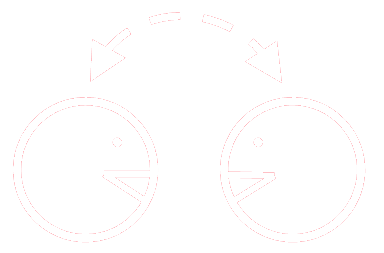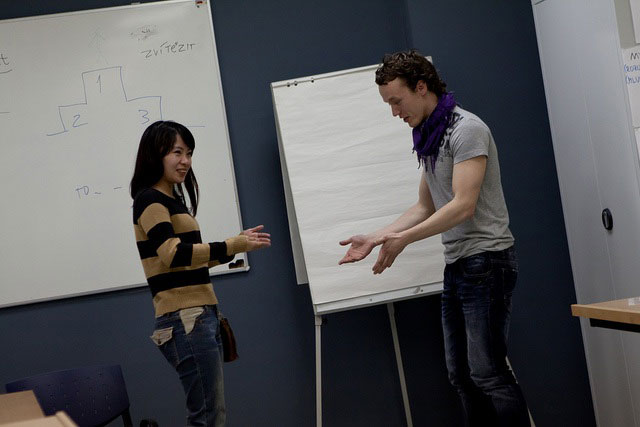You have agreed to meet someone for a language exchange. Ok, but there still remain what I call “the finer details” to be worked out. The idea of a language exchange sounds nice, but how precisely is one carried out? What follows, in no particular order, are a few suggestions regarding these “finer details” about setting up these language exchanges.
Suggestion 1: Consider splitting up the language exchange into two sessions
For our purposes, let’s say that you know English and want to learn Spanish, while your partner knows Spanish and wants to learn English. Instead of having a single session in which half the time you teach English and half the time your partner speaks Spanish, consider separating this one long session into two. In one session you teach English and in the other your partner teaches Spanish. This situation gets rid of that awkward “transition” period where you and your partner clumsily have to shift gears to an entirely new language.
Suggestion 2: Consider using a timer
If you and your language partner want to have a single session where you do both parts of the exchange as discussed in suggestion 1, consider using a timer. Doing so imposes a certain amount of structure on the language exchange and prevents you from continuing to teach English when you should be learning Spanish and vice versa.
Suggestion 3: Consider making slightly longer sessions
In my opinion, my experience with language exchange has taught me that hour-long sessions are more beneficial than thirty minute sessions. I want to be clear: I don’t simply mean that in the hour-long sessions I get more done, I mean that the last thirty minutes of the hour long session are incredibly more productive than the first thirty minutes. Think of it like this- it takes your mind a little while to adjust to the new language, and after that period of adjustment, the real progress can start happening. If you schedule 15 minute sessions with your partner, for example, your brain will spend the entire session just adjusting to the new language and you will be stopping the session just when your brain is ready to really start working.
Suggestion 4: Consider making as many sessions as possible
This one is a no-brainer. The more contact you have with a language, the quicker you will learn it. I would recommend as a starting point to meet at least once a week.
Suggestion 5: Consider making flexible lesson plans
This goes back to the idea of having structure I briefly talked about earlier. Just having a conversation with your language partner, while providing much needed contact with the language, is not the most efficient use of time. Have an idea of topics to cover and try to stick to a general schedule. That being said, if you and your partner are in the thick of an extremely productive practice, it doesn’t make sense to artificially switch to another topic. Mainly just find the right balance and be flexible. Organic growth aided by a little planning is what you are aiming for.
Photo Credit: Jirka Matousek





